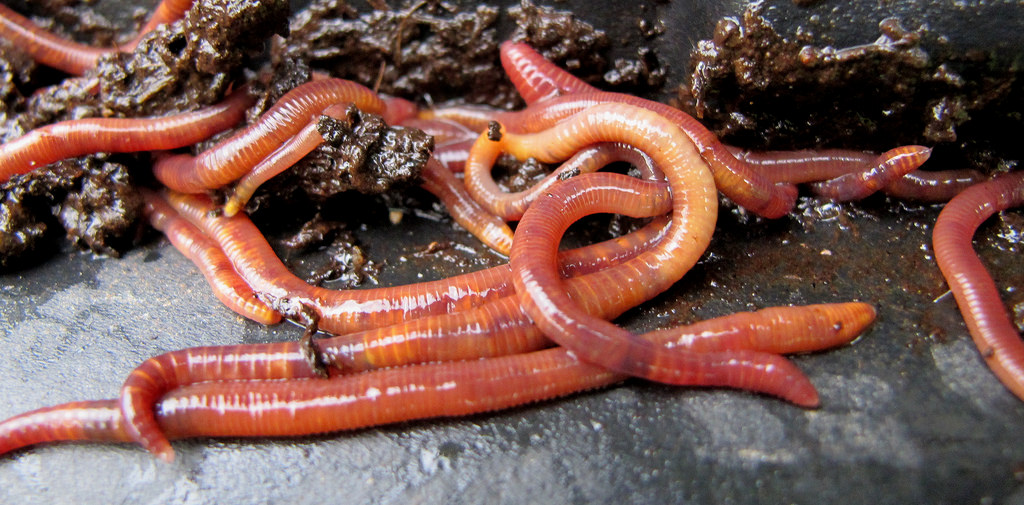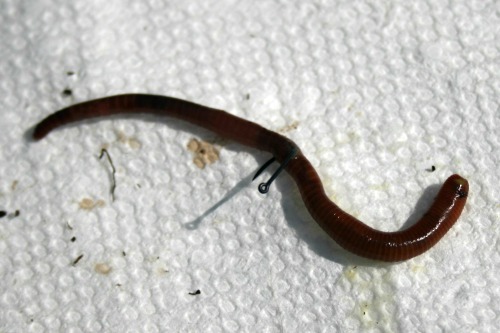Experience the Advantages of Using Red Wiggler Express for Effective Lawn Care
Experience the Advantages of Using Red Wiggler Express for Effective Lawn Care
Blog Article
Unlock the Secrets of Red Wigglers: Your Overview to Composting Success
The integration of red wigglers right into composting methods presents a substantial possibility for boosting soil health and wellness and advertising sustainability. Comprehending their demands and actions is vital for enhancing their possibility, from establishing up a proper worm container to feeding them the right materials.

What Are Red Wigglers?
(Red Wiggler Express)Red wigglers, medically recognized as Eisenia fetida, are a species of earthworm primarily made use of in composting because of their impressive ability to decay raw material effectively. These worms are identified by their reddish-brown pigmentation and a segmented body, usually determining in between 3 to 4 inches in size. Unlike other earthworm species, red wigglers prosper in abundant, natural atmospheres, making them ideal for vermicomposting systems.
Native to North America, they are often discovered in decaying leaves and compost heap, where they play an essential function in nutrient recycling. Their adjustment to staying in a damp, cardiovascular atmosphere enables them to consume large amounts of natural waste, simplifying into nutrient-rich castings that boost dirt health and wellness.
Red wigglers reproduce rapidly, with a single worm qualified of generating several cocoons each week, each including several hatchlings. Comprehending the biology and habits of red wigglers is important for maximizing their capacity in composting applications.
Advantages of Making Use Of Red Wigglers
Harnessing the power of red wigglers in composting provides countless benefits that enhance soil wellness and advertise lasting waste monitoring. These exceptional organisms efficiently damage down raw material, transforming kitchen area scraps and yard waste into nutrient-rich vermicompost. This finished item is exceptionally helpful for plant growth, as it enhances soil framework, boosts dampness retention, and boosts nutrition availability.

(Red Wiggler Express)Additionally, the presence of red wigglers in your composting system can speed up the composting process, generating premium compost in a fraction of the time contrasted to conventional techniques. The spreadings generated by these worms are also teeming with beneficial microorganisms that further enrich the dirt environment.
Establishing Your Worm Container
Producing a reliable worm container is a simple procedure that can substantially improve your composting initiatives. The primary step is choosing an ideal container. Worm bins can be made from plastic storage space containers, wooden boxes, or commercially offered worm containers. Ensure the container has sufficient drainage and ventilation openings to keep ideal moisture degrees and air flow.
Next, prepare the bedding material, which serves as the worms' habitat. A mix of shredded newspaper, cardboard, and coconut coir functions well, offering a comfortable setting for the worms.

Feeding Your Red Wigglers
To ensure the health and performance of your red wigglers, it is vital to give them with a balanced diet that meets their dietary demands. Red wigglers prosper on a varied variety of organic products, which not just provide needed nutrients yet also promote effective composting.
Beginning by integrating kitchen area scraps such as vegetable peels, fruit cores, and coffee grounds. Stay clear of citrus fruits, onions, and garlic, as these can be detrimental to worm wellness. Furthermore, present shredded paper, cardboard, and Check This Out dry fallen leaves to create a well-aerated environment.
Feeding regularity must be kept an eye on; typically, worms can eat half their body weight in food weekly. It is important to avoid overfeeding, as excess food can lead to undesirable smells and draw in bugs. A good method is to add food in tiny amounts, enabling worms to refine it before introducing a lot more.
Preserving moisture degrees is additionally important; the bedding must be damp but not soaked. Lastly, make sure to frequently inspect the temperature level and pH levels of the bin to make certain an optimal setting for your red wigglers, eventually boosting their composting performance.
Harvesting and Utilizing Garden Compost
A successful composting procedure with red wigglers finishes in the rich, dark compost called vermicompost, which can substantially enhance soil health and plant development. Gathering this nutrient-dense product commonly takes place every 3 to 6 months, depending on the size of your system and the amount of raw material being processed.
To harvest, delicately separate the compost from the worms and any type of undecomposed products. One reliable method entails moving the components of the bin away and adding fresh bed linen and food to the void, encouraging the worms to move. After a few days, the compost can be accumulated from the contrary side.
It is vital to use vermicompost properly to optimize its benefits. It can be used as a leading clothing for yard beds, blended into potting soil, or brewed right into a nutrient-rich fluid plant food called "worm tea." This application approach helps to supply vital nutrients straight to plant roots, promoting much healthier development. By including vermicompost right into your horticulture program, you not just recycle organic waste but additionally develop a successful ecological community that supports lasting horticulture methods.
Conclusion
In recap, red wigglers serve as outstanding allies in composting initiatives, changing organic waste right into nutrient-rich vermicompost (Red Wiggler Express). Their special biological characteristics and effective waste handling abilities contribute significantly to lasting horticulture practices. By recognizing the optimal problems for their environment, feeding demands, and garden compost harvesting strategies, garden enthusiasts can boost dirt wellness and promote plant vitality. Embracing vermicomposting not only minimizes land fill waste however additionally cultivates a more environmentally responsible approach to gardening and source monitoring.
Report this page